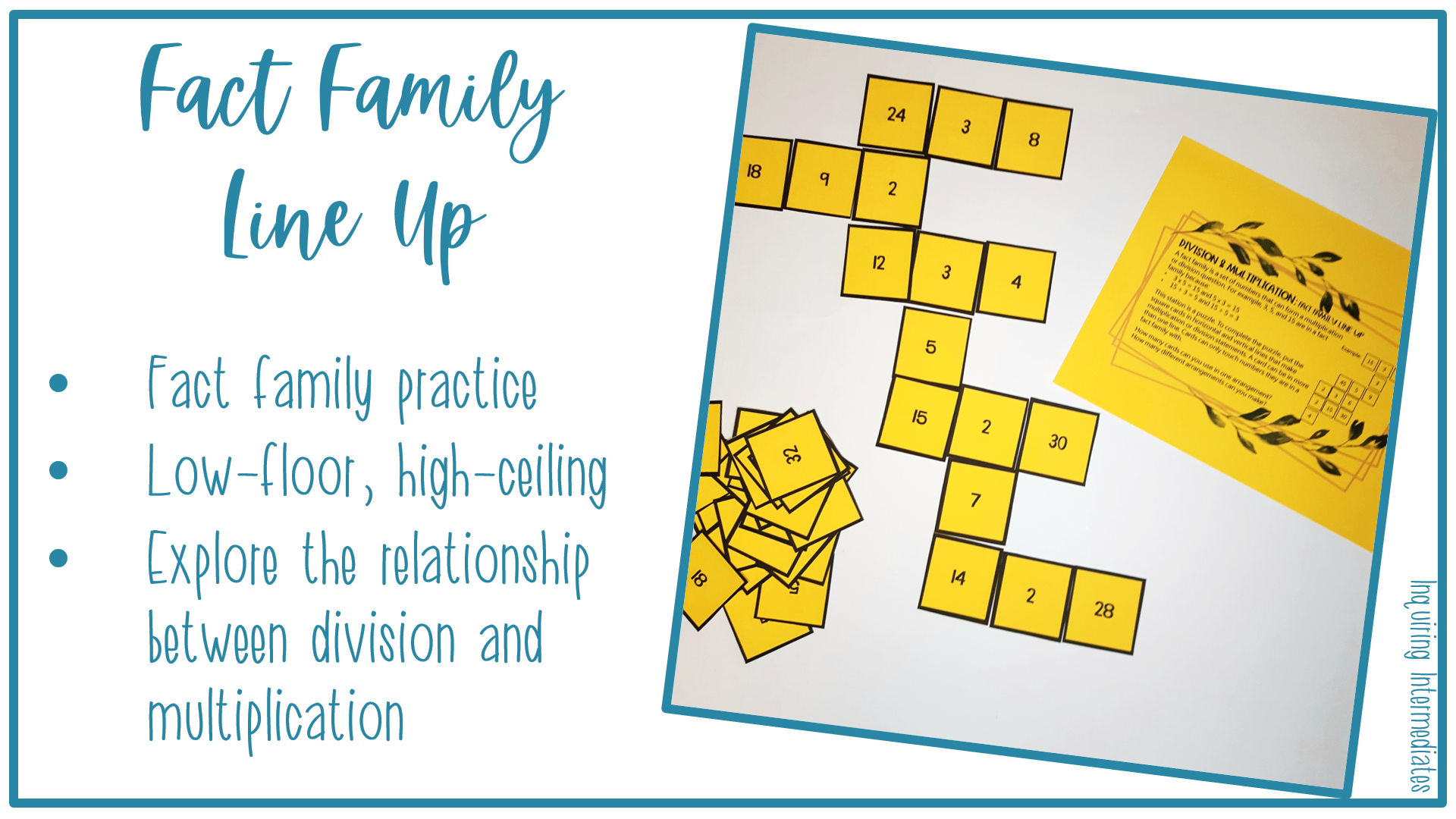One of my goals is to play and create more math games. I’ve been trying to come up with math games that are fun and that allow students time to practice the specific skills that we’re working on. Here are five fun division games for 4th grade that you can use as math stations instead of assigning more division worksheets!
Note: You can make these games yourself but, if time is short, I’ve got them already made for you here. Click the pictures if you want to grab them individually!
Fact Family Line Up
This game is a great way for students to explore the relationship between division and multiplication. To begin, groups of students are given a pile of cards with numbers on them. They need to sort them into fact families and arrange each family in a line that represents a division or multiplication equation. That’s the easy part! The challenging bit is getting the fact family lines to connect in as many places as possible while ensuring that each connection is part of a fact family equation. You know how any touching letters on a Scrabble board must spell a word? This game is like that, but with math!
Make Arrays Task Cards
This activity is exactly what it sounds like: task cards for array-building. The task cards all have division problems on them. Students pick one, make an array that matches the equation on the card, and record their answer on a recording sheet. I don’t collect those, so I just put the sheet in a whiteboard sleeve. They can compare answers against an answer key or with group members. I have two sets of these cards: one for division without remainders, and one for division with remainders. I love how building arrays makes division with remainders visual!
Sometimes, someone will grumble about having to make the arrays when they already know the answer to the question, but I explain that tactile learning is good for our brains. I’ve also found that using loose parts for this station makes it a big hit. Everything just seems more fun when you get to play with pretty rocks, shells, and acorns.
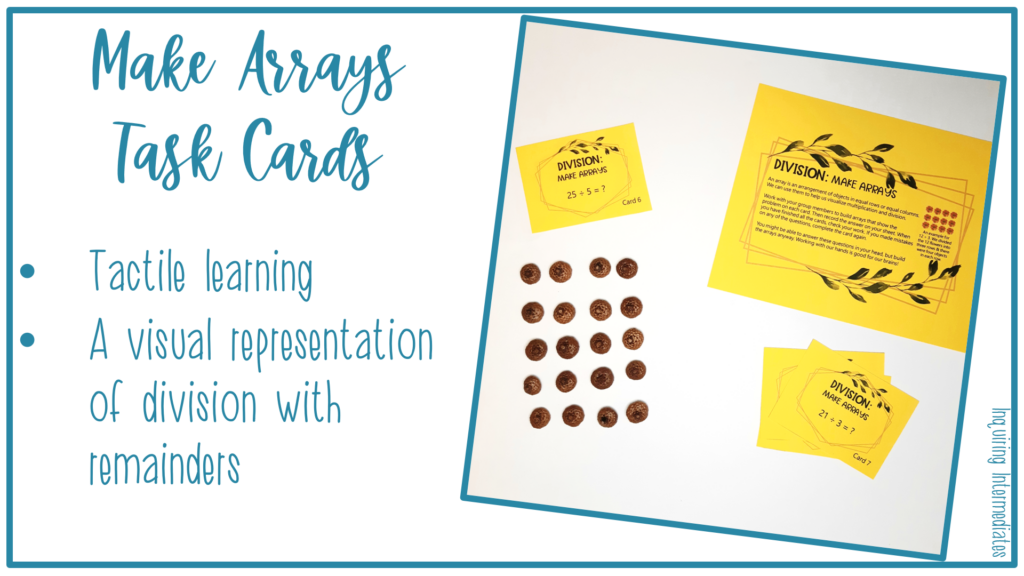
Roll and Cover: Divide and Cover Math Game
Divide and Cover is a roll-and-cover dice game. Students roll two twelve-sided dice, divide the larger number by the smaller, and cover the quotient with a counter. If the numbers don’t divide evenly, their turn is over. The goal is to have the longest uninterrupted line of covered spaces at the end of the game.
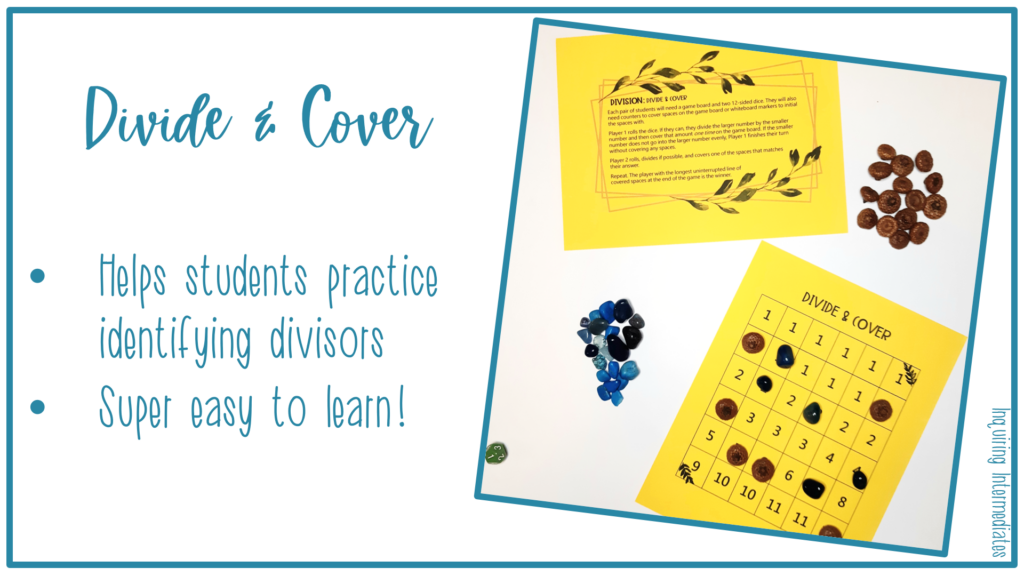
Divisors and Multiples Connect Math Game
This is one of my favourite division games because the combinations really are endless! Groups of students are given little octagonal cards and each card has a number. They begin by picking a card, putting it down, and trying to connect it to as many divisors or multiples as possible. There are two catches: they cannot connect a card to the same number more than once, and anything that touches a number must be a divisor or multiple of it. This division game is definitely a low-floor, high-ceiling activity.
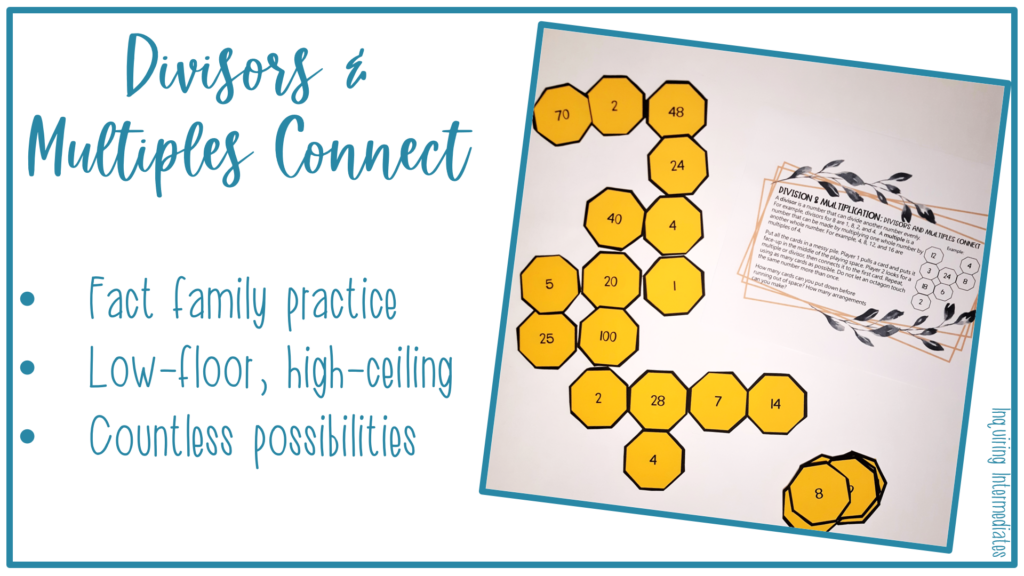
Division Games with Cards: Division Go Fish
You can play Division Go Fish by pulling the face cards out of a regular deck. Aces equal one. Shuffle the cards and give six to each player. The rest go in a draw pile. Players look at their cards, put down any pairs, and replenish from the draw pile. The first player looks at their cards and decides which one they want to find a match for. They choose another player and ask them a division question with that quotient. For example, if they wanted a two, they could ask, “Do you have fourteen divided by seven?” Aside from the way you “fish” for cards, the game is the same as a regular game of Go Fish.
Division Games with Cards: Fact Family War
Fact Family War is another division game with cards. You can play with a standard deck. Make Aces into 1s, Jacks into 11s, Queens into 12s, and Kings into 13. Shuffle the cards and split them into as many draw piles as there are players. The number of cards in each pile does not have to be exactly the same. On the count of three, each player pulls the top two cards off their deck and puts them face-up on the table. All players check all the cards that were pulled, looking for numbers that can form a fact family. If anyone spots a fact family, they should call it out. Then they get to keep those cards! If there is no fact family among those cards, they get put to the side and everyone draws two cards again. When the draw piles are empty, the person who found the most fact families wins.
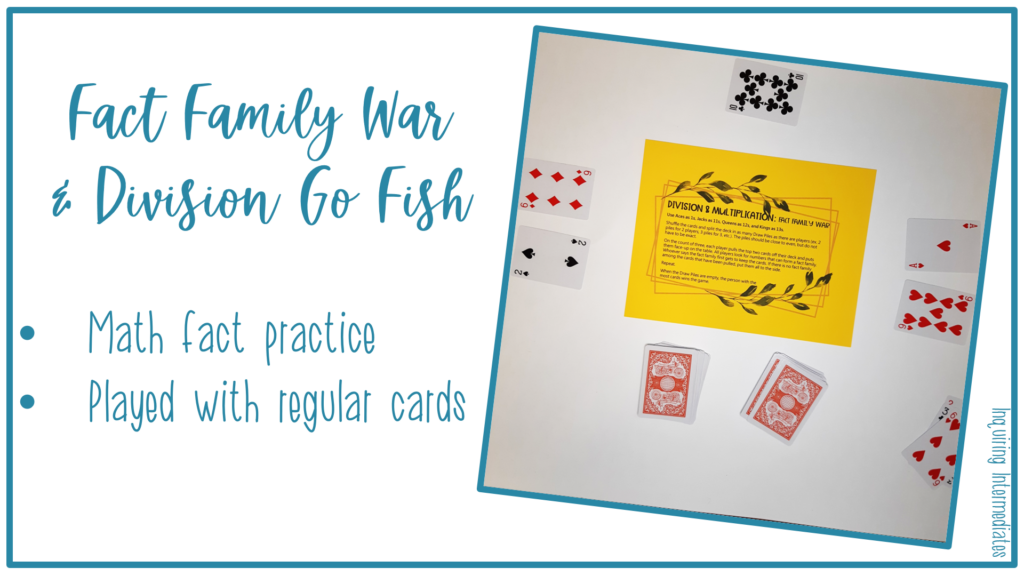
Who Are These Games For?
I’d say these are good division games for 4th grade, 5th grade, or 3rd grade. As always, it depends on your students and curriculum. Remember: games are supposed to be fun! And yes, that includes math games. If the division games we give our students are too challenging, kids will get discouraged. If they’re too easy, kids will get bored. We want to hit that sweet spot where the task is ‘doable’ but there are still ways that players can challenge themselves. That might be by thinking flexibly during the multiplication and division games. It might be trying to increase fact family recall speed while playing division games with cards.
Have you tried any of these activities? What are some of your favourite math games?
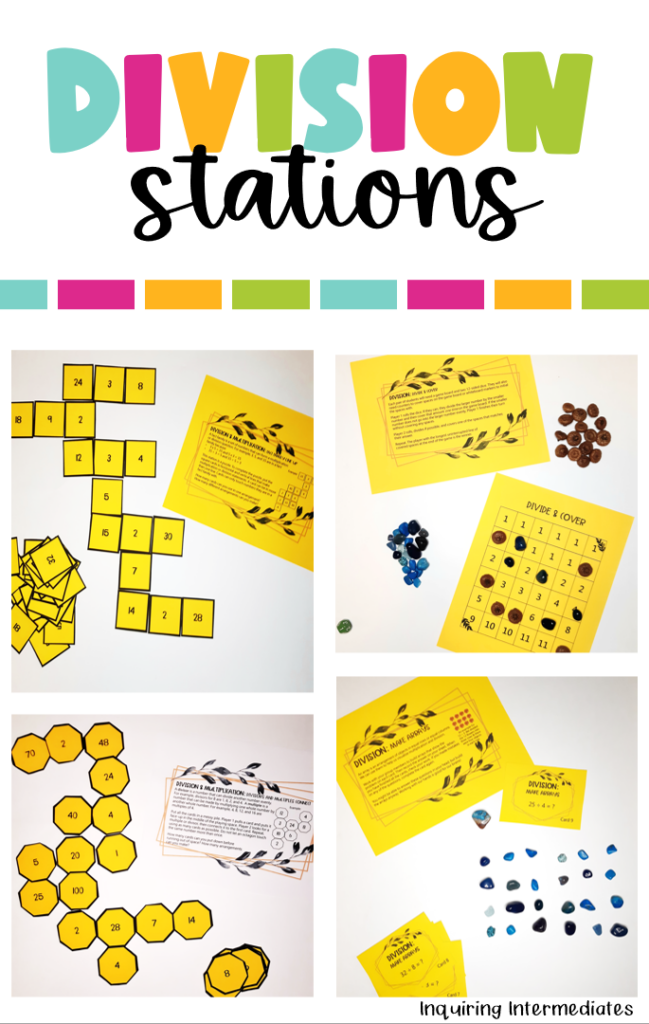
Grab These Games and Other Division Resources!
You can save time and buy ready-made materials for all these games individually or in a bundle!
If you’re looking to take your division lessons to the next level, try out these long division worksheets that outline different ways to divide large numbers or this long division slideshow with the steps to long division!
More Math Games and Strategies
Loved these division games for 4th grade and want to bring more games into your math class? Yay! You’re in the right place. Check out my post about no-prep Canadian money math games!
If you like giving students multiple ways to approach math problems, give my post about 5 Ways to Teach Multiplication a read.

